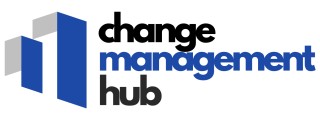
Understanding the Vision for Change
The Core of Change: Unraveling the Vision
As you prepare to engage with senior leaders about change management, understanding their vision is paramount. Delving into the motivations behind the change helps not only in aligning efforts but also in ensuring that the change embodies the organization's goals. Here are some purposeful questions senior leaders could reflect on:- What is the driving force behind this change? This question can shed light on whether the change is driven by external market conditions, internal growth plans, digital transformation needs, or a shift in company culture.
- How does this vision align with our long-term objectives? Leaders will need to articulate how the proposed change paves the path towards the organization's strategic goals. It helps to determine if the change is more reactive or proactive.
- What aspects of our organizational culture support or hinder this change? Acknowledging the role of existing culture is crucial. This understanding aids in predicting the level of employee engagement and potential challenges that might surface.
- How does this transformation affect career growth for team members? Uncovering potential pathways for career growth can be a motivating factor for employees and ensure continued commitment to the change.
- In what ways will this change improve work life and business operations? It's important for great leaders to communicate the expected improvements clearly, which can increase buy-in from employees and other stakeholders.
Assessing the Impact on the Organization
Analyzing the Wider Organizational Impact
When embarking on a change management journey, it is essential for senior leaders to thoroughly assess the potential impact on the organization as a whole. This involves understanding how the change will influence both immediate operations and long-term objectives. Questions to ask here revolve around understanding the ripple effects the change might have across various departments and functions. To assist in uncovering these impacts, questions should focus on:- How will the change alter our current business operations? Senior leaders need to gauge the extent to which existing processes might be disrupted and how the transition can be made smooth. Are there specific workflows or systems that require immediate attention?
- What is the anticipated effect on company culture and employee engagement? Changes can significantly influence organizational culture. Leaders should consider what steps can be taken to maintain strong work-life balance and boost employee morale during the transition.
- How will this change align with our long-term strategic goals? Evaluate whether the change supports the overall strategic direction and how it contributes to the mission of the organization.
- What are the personal impacts on team members? It’s crucial to think about how individual roles and responsibilities will shift. Will this result in the need for upskilling, or could it potentially hinder career growth?
Identifying Key Stakeholders
Pinpointing Crucial Stakeholders in Change Management
Change management success hinges significantly on identifying and understanding key stakeholders—the people who will influence or be affected by the change. This understanding helps frame the strategic questions that senior leaders and team members must address. Here are some questions leaders can consider:- Who are the primary individuals or groups impacted by the proposed changes?
- How will these changes align with the existing organizational culture and leadership style?
- What role will each stakeholder group play in the change process? Consider the employees and senior leaders directly involved.
- How can we engage stakeholders early to champion the change, minimizing resistance and fostering employee engagement?
- What could be the potential challenges or barriers for these stakeholders, and how can we address them effectively?
Evaluating Communication Strategies
Crafting Effective Messaging for Change
When it comes to managing change within an organization, evaluating communication strategies is crucial. Effective communication plays a pivotal role in ensuring that all team members, from leadership to employees, are aligned with the change vision. This section emphasizes how senior leaders can assess and shape communication strategies to navigate the complexities of organizational culture and foster employee engagement.
Firstly, it is essential for leaders to recognize the importance of clear and transparent messaging. The following strategic questions can guide senior leaders in refining their communication approach:
- How does the current messaging align with the company's culture and values?
- What platforms and channels are most effective for reaching different stakeholders within the organization?
- Are there tailored messages for diverse groups to ensure inclusivity and understanding?
Additionally, leaders must consider how communication efforts will be resourced and supported. Who within the leadership team or department is responsible for crafting messages, and how will they engage with feedback from team members? Encouraging open communication and feedback loops can help identify potential challenges early, allowing senior leaders to address resistance more proactively.
Digital transformation has also reshaped the way organizations communicate. Thus, understanding how digital tools can be leveraged to facilitate more effective communication is vital. Does the current strategy incorporate digital solutions, and how do they fit into the broader communication plan?
Senior leaders should also reflect on how decision making processes are communicated. Transparency in decision-making helps build trust and allows employees to align their work life with the long-term goals of the business. This ultimately contributes to career growth and the overall success of the change initiative.
Measuring Success and Progress
Tracking and Evaluating Change Management Success
Ensuring success in change management requires asking the right questions to monitor progress and impact effectively. It's essential to establish metrics and benchmarks to assess the performance of change initiatives over time. Senior leaders play a pivotal role in propelling the organization forward, but understanding how to measure the effectiveness of these efforts is crucial. Firstly, leaders should align with their team to determine what success looks like for their specific organization. This involves evaluating how the change aligns with business objectives and long-term strategic goals. Team members who are engaged and clear on the company's vision are more likely to contribute positively to these outcomes. It's important to frequently ask questions related to:- How can we determine if our change initiatives are achieving desired results?
- What metrics are most relevant to our organizational culture and business goals?
- Which early indicators or benchmarks can help us course-correct if necessary?
Addressing Resistance and Challenges
Overcoming Resistance and Managing Challenges
Change is never easy, and resistance is a natural part of any transformation. Senior leaders play a crucial role in navigating these hurdles effectively. When faced with challenges, strategic questions and decision-making become essential tools for leaders. One of the first steps is acknowledging the resistance. Great leaders understand the importance of listening to employees' concerns and integrating their feedback into the change process. This openness not only promotes employee engagement but also helps in identifying underlying issues that may hinder progress. Incorporating a proactive approach can help in mitigating resistance. Leaders should consider the following:- Engage in Transparent Communication: A clear, honest communication strategy ensures that team members understand the reasons behind changes, helping to align them with the organization's long-term goals.
- Build a Supportive Culture: Fostering a supportive organizational culture encourages a sense of belonging and reduces the fear associated with change. Leaders should regularly check in with their teams to provide reassurance and guidance.
- Empower Employees: Providing opportunities for career growth and development can ease anxieties. Allowing employees to take part in decision-making processes can also enhance their confidence in managing transitions.













